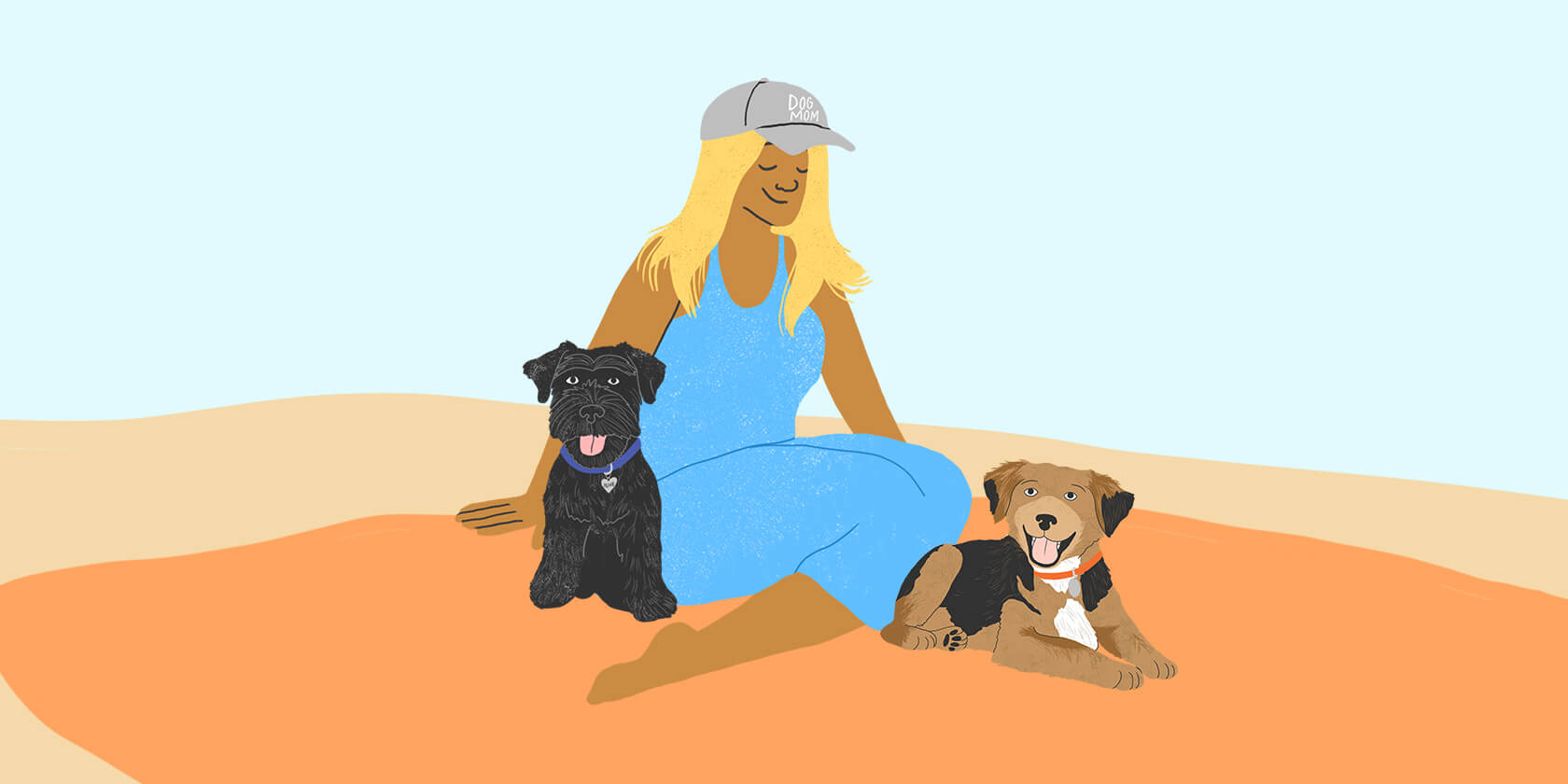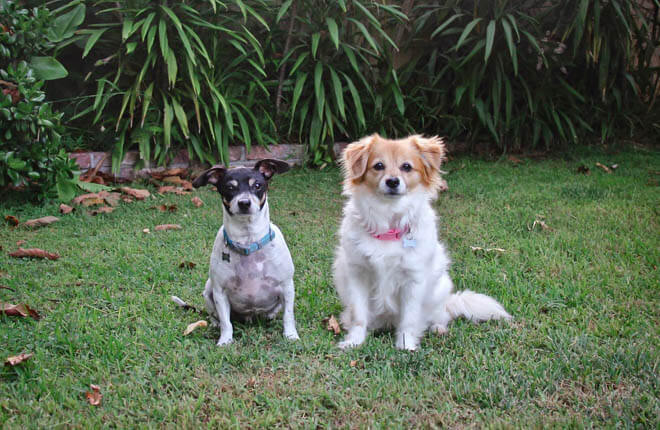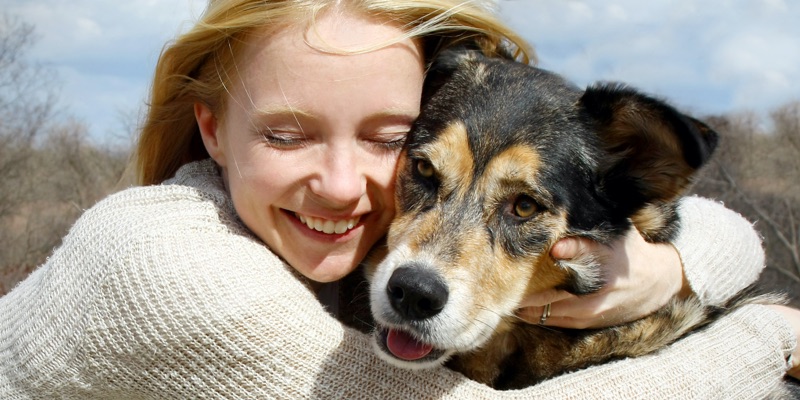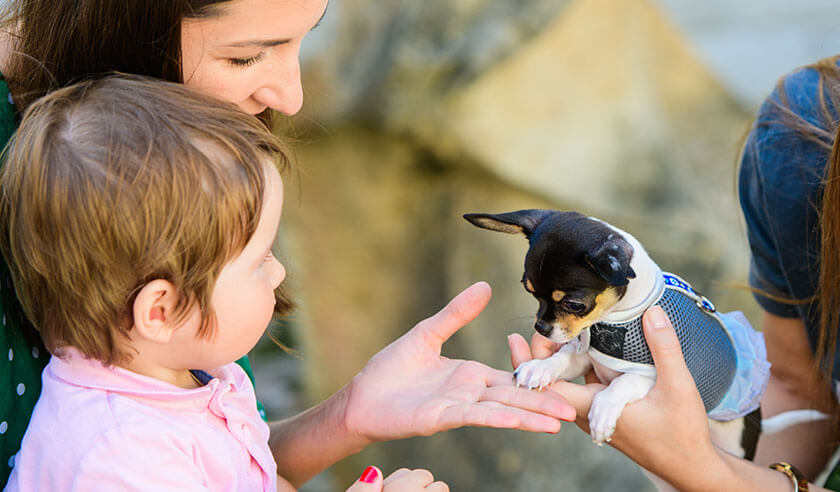Are you wondering if you should get another dog? Or thinking your current dog might enjoy a furry brother or sister? Adding a second dog to your family is a big decision and a multi-dog home is different than sharing your life with just one dog. But it can be incredibly rewarding for humans and canines alike if done with careful thought and planning.
Reasons to Get a Second Dog
People have different motivations for getting a second dog, such as:
- Your dog might benefit from a companion. Many dogs enjoy having a fellow canine playmate. Be aware that if your current dog suffers from separation anxiety, adding a second dog will not automatically fix the problem. It may help, but it may also result in having two dogs with separation anxiety.
- You want to rescue another dog. If you have a big heart for shelter and rescue dogs, you might feel ready to bring another one out of the shelter and into your home. Keep in mind, you can consider becoming a foster volunteer first if you’re unsure about the full-time commitment of a second dog or if you want to see how your current dog might get along with a new housemate.
- Your current dog is getting older. Some people might appreciate a younger canine buddy for activities like hiking or running and to provide some energetic companionship for their aging dog. They may feel their current dog can help a second dog “learn the ropes” of training and routine. Some find that having a second dog in their life helps with the difficult passing of their older dog when that time comes.
- You just love dogs. There doesn’t have to be a reason for wanting a second dog beyond the fact that you love them (as long as you can provide for all of your dogs’ needs).

What to Consider Before Getting a Second Dog
First and foremost, it’s important to understand whether bringing another pup home is right for your current dog.
- Will they enjoy having another dog around?
- Will you be able to continue to provide each of them with the attention and care they need?
- Do they have any behavioral issues, such as resource guarding, that might be exacerbated by another dog in the home?
- Are they physically healthy enough for the addition of a second dog?
- Can you ensure that they each have a separate safe space where they can retreat when they need a break?
Our pets rely on us to give them a stable and healthy environment. If you think the stress of living with another dog might just be too much for your current dog, simply enjoy sharing your life with your original best friend for a while before revisiting the idea.
If you feel your current dog is ready for a new canine housemate, it’s time to think about the possible changes in your day-to-day.
- Cost. Two dogs mean twice the dog food, veterinary visits, flea, tick, and heartworm preventatives, pet insurance, and more. These things can add up quickly. Plan ahead to make sure you’re comfortable with the extra costs.
- What age of dog will work best for your home? Puppies and younger dogs are a lot of work. Are you prepared for the challenges of raising a puppy while also making sure your current dog can maintain the level of care they’re used to? Is everyone in your home ready to pitch in? If you have a senior dog, an energetic adolescent dog might overwhelm or accidentally injure them during play. Some adult dogs simply don’t enjoy puppy antics, while others genuinely enjoy having a ball of energy around.
- What size or breed of dog will work best? Breeds have different energy levels and needs. If your current dog is “low maintenance,” bringing home a dog with different grooming, exercise, or training needs is a significant change and one you should be prepared for. If you currently have a small or fragile dog, a second dog’s size and experience with smaller dogs plays a big role in their physical safety. Not to mention that two dogs mean more supplies, such as dog beds, crates, playpens, and more.
Tips to Prepare for a Second Dog
Now that you’ve considered the “why” and determined what type of dog might be the best fit, it’s time to prepare for welcoming another dog to your family. Some preparation beforehand will go a long way to making the transition easier on your human family and your growing canine family.
- Create safe spaces. Set up a safe space for your current dog where they can rest undisturbed when they need a break. This might mean installing baby gates or setting up a puppy playpen for the new dog to hang out in while they acclimate to their new home. Crate training (with lots of positive reinforcement) can be an excellent tool to help separate the dogs when you can’t supervise to ensure everyone is getting along.
- Dog proof! Whether you’re bringing home a young puppy or an adult dog, go through your home room by room and make sure there isn’t anything potentially dangerous or toxic they can get into (this is called dog-proofing). While your current dog might not find electric cords or potted plants an enticing chew toy, a new dog might.
- Make a plan. Think about who will be in charge of the many responsibilities of caring for multiple dogs. This is especially important if your children will be helping to care for their canine family members. Talk with them ahead of time about duties and a schedule. Dogs thrive with routine, so staying consistent from the get-go sets everyone up for success — especially when it comes to house training.
- Talk to your veterinarian. Before bringing your second dog home, it’s a good idea to talk to your veterinarian and schedule any needed check-ups, vaccines, or other procedures in advance. They can also instruct you on the best ways to introduce the two dogs and avoid situations that introduce conflict and stress. Depending on your goals, your veterinarian might also recommend a certified dog trainer as an additional resource for helping you introduce a second dog to your home.
ZPC-01203R1





